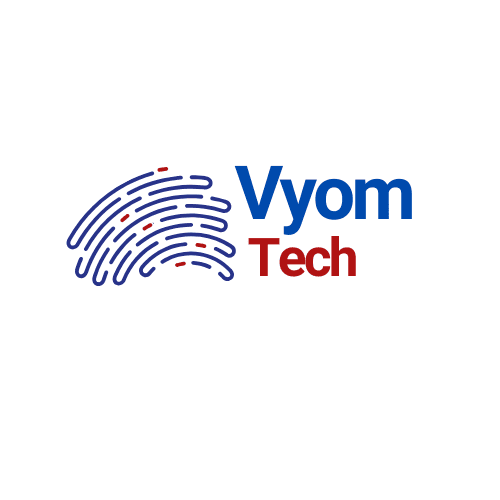You do not need to specialize in complex Statistics and Linear Algebra to be an AI-Informed Entrepreneur, but it is recommended to have an understanding of the basic AI concepts and the solution development process. Because, when you start the AI project, it helps you be aware of the project details and enables you to speak the language of the engineers, which in turn helps them to understand your business requirements, design and develop a better product for your business.
The field of Artificial Intelligence is still evolving and can be broadly classified into Machine Learning (ML), Deep Learning, Natural Language Processing (NLP), and Computer Vision (CV).
Machine Learning and Deep Learning are classes of algorithms
NLP and CV are the groups of use cases. NLP deals with textual data from any source while CV focuses on more visual applications.
LLMs, GANs, RAGs, Diffusion Models, and AI Agents are examples of algorithms/frameworks.
The Bygone Era
The idea of duplicating human intelligence into a human machine is a long-standing idea. In the 1940s, Warren McCulloch and Walter Pitts created the first mathematical model of a Neural Network, much inspired by the human brain. John McCarthy coined the term Artificial Intelligence in 1956 at the Dartmouth Conference, which started the first wave of AI research.
The first wave of AI “explosion” focused on symbolic/logical AI. Symbolic AI used the rules-based approach, where a series of rules that the AI would follow to provide the predictions. These rules were manually set based on the problem that AI was working on. While the approach allowed to create some high quality, meticulous machines for specific problems, the major drawback was that it was unable to do any sort of pattern recognition and was often too expensive to commercialize to the larger public. This form of logic-based AI research persisted until the late 70s, where the focus shifted from logic to statistical pattern recognition.
In the 1980s, the second wave of AI explosion led to the rise of “Expert Systems” These were custom AI systems that were specifically designed to solve one or a specific set of problems. MYCIN was one such expert system that was specifically designed to diagnose bacterial infections. Researchers abandoned rules-based AI with the advent of data-based AI, Machine Learning.
The Golden Era
Around the 1990s, the field of Machine Learning began receiving more attention. ML sets itself apart from symbolic AI by not approaching the problem with preset rules but instead learning patterns from the data and setting rules with the learning. For example, instead of defining rigid rules for classifying loan applicants, an ML algorithm can analyze historical trends to identify patterns associated with loan repayment success or failure.
There are three different learning types of Machine Learning algorithms: Supervised, Unsupervised, and Reinforcement.
A supervised ML algorithm trains on data where the outcome is already known, and the job of the algorithm is to discover the relationship between the input and the output. This method is widely used in applications such as credit scoring and customer segmentation.
Unsupervised learning, in contrast, identifies hidden structures in unlabeled data, helping businesses discover insights like customer clustering.
Reinforcement learning focuses on dynamic environments, enabling the algorithm to learn through trial and error, which is often applied in robotics and dynamic pricing strategies.
For SMB owners, understanding these ML categories can help in identifying which type of Machine Learning algorithm best suits specific business challenges. It is easy to make the investment into the wrong kind of algorithm when testing out, so it is important to understand the difference between these categories.
Deep Learning: Neurons as a Tool
Deep Learning is a subset of Machine Learning that uses the neural structure of the human brain as the inspiration for the algorithms. These networks consist of layers of interconnected nodes, or “neurons,” which process data in multiple stages, enabling the model to learn increasingly complex patterns. Deep Learning models tend to learn the features on their own, whereas with Machine Learning it is more informal.
For example: Take image-based product quality inspection. Traditional ML might rely on manually engineered features like color and size, but deep learning models autonomously extract these features and more subtle patterns.
SMBs looking to automate customer support, deep learning can power chatbots capable of understanding and responding to customer queries in natural language.
While deep learning requires significant computational resources and expertise, cloud platforms like AWS Sage Maker and Google Cloud AI have made it accessible to smaller businesses. These tools offer pre-trained models and scalable infrastructure, enabling SMBs to tap into the potential of deep learning without heavy upfront investments.
Large Language Models (LLMs)
Large Language Models (LLMs) like GPT-4 and BERT are a remarkable evolution of deep learning, designed to process and generate human-like text. LLMs are just Deep Learning models on steroids. Researchers train LLMs on billions of sentences and can input billions of points. In baking terms, LLMs are capable of mixing 100s of pounds of dough to bake a cake that be dozens of feet in height.
Imagine an SMB managing a customer support team. Instead of manually categorizing and responding to queries, an LLM can analyze the incoming text, categorize issues, and even draft responses. These models also aid in automating repetitive tasks, such as drafting emails, generating reports, or analyzing customer feedback.
What sets LLMs apart is their ability to adapt to specific domains. SMBs can fine-tune these models using their data, creating customized tools that understand industry-specific terminology and nuances. With platforms like OpenAI, Hugging Face, and Azure Cognitive Services offering APIs for LLMs, SMBs can integrate advanced language capabilities into their applications seamlessly.
Generative AI: Creativity Meets Automation
Generative AI is the artistic sibling of LLMs, excelling at creating new content, including text, images, audio, and even videos. Tools like DALL-E, Stable Diffusion, and Midjourney have demonstrated the ability to produce stunning visuals based on textual descriptions. This technology is still nascent, and you would have seen or heard of many Gen AI fails in both images and texts.
Though it is still nascent, many companies have the bandwagon in adopting Gen AI into their workflows. For example: Companies are implementing GenAI enabled solutions to design visuals or write advertisement copy, and produce high-quality drafts in minutes. Beyond creativity, Gen AI can help SMBs streamline processes like creating product manuals, generating personalized customer messages, and even prototyping product designs.
However, the use of Generative AI is not without challenges too. With the increased data ingestion power of these new models, privacy and data governance concerns are becoming much more important. The data preparation step becomes much, much more important because these Gen AI and LLM models are much more prone to hallucinations, which can degrade the models .
AI Agents: Autonomous Systems that can Run Your Business
AI Agents are the newest kid on the block. Unlike LLMs or Generative AI, which focus on specific outputs, AI Agents are designed to handle multi-step workflows and adapt to changing conditions. This makes them invaluable for SMBs looking to automate processes like inventory management, customer relationship management, or even logistics planning.
For example, an SMB in retail could deploy an AI Agent to manage supply chain operations. The agent could analyze sales data, predict stock requirements, place orders, and coordinate with suppliers, all without human intervention.
For example, a service-based SMB can use AI Agents to schedule appointments, send reminders, and optimize staffing or resource planning based on predicted demand.
While AI Agents are still in their infancy compared to other AI technologies, platforms like AutoGPT and LangChain offer accessible frameworks for experimentation. As these systems become more advanced, SMBs can leverage them to achieve higher levels of efficiency and automation that were once the domain of large enterprises.


